The Emotional Palette: How Colors Shape Our Moods and Behaviors
Colors are not merely visual stimuli; they are powerful influences on our emotions and behaviors. From the vibrant reds of ripe strawberries to the calming blues of a clear sky, colors affect us on both conscious and subconscious levels. This exploration aims to unravel the complex relationship between colors and our emotional states.
Understanding Color Psychology
Color psychology is the study of how colors affect human behavior, mood, and mental processes. Each color is associated with specific feelings and meanings. For example, red often evokes passion and excitement, while blue tends to promote relaxation and tranquility. Researchers in psychology and marketing have long recognized that colors can significantly influence consumer choices and mood.
One classic example is the use of color in advertising. Fast-food chains often use red and yellow in their branding, as these colors are known to stimulate appetite and grab attention. Conversely, banks tend to lean towards blue, signifying trust and reliability. The psychological implications of colors extend far beyond commercial usage and seep into our daily lives.
The Emotional Impact of Colors
1. Red: The Color of Power and Passion
Red is one of the most emotionally charged colors. It is often associated with intense feelings, from love and passion to anger and aggression. Research suggests that red can increase heart rates and create a sense of urgency. This makes it effective in both romantic and competitive contexts.
Emotional Responses
- Love: Red is often linked to romantic feelings and is widely used on Valentine’s Day.
- Aggression: The same intensity can lead to feelings of anger, evidenced by phrases like “seeing red.”
In various cultures, red carries different meanings; it symbolizes good fortune in China but can represent danger in Western contexts.
2. Blue: The Color of Calmness and Trust
Blue is frequently associated with calmness, stability, and reliability. It tends to have a calming effect on the mind and body. Many corporations use blue in their branding to instill a sense of trust among consumers.
Emotional Responses
- Trustworthiness: Blue is commonly used in the logos of banks and tech companies.
- Calmness: Light shades of blue can reduce stress, promoting a sense of relaxation.
Scientific studies have shown that spending time in blue environments can lower blood pressure and other stress indicators. This might be why we often seek out blue-colored spaces for relaxation.
3. Yellow: The Color of Happiness and Optimism
Yellow is the color that is most often linked to happiness and positive feelings. It invokes optimism and warmth, as it is reminiscent of sunlight. However, too much yellow can prompt feelings of agitation and anxiety.
Emotional Responses
- Happiness: Bright yellow can boost mood and is often associated with joy.
- Anxiety: On the flip side, overexposure to yellow can be overwhelming, leading to feelings of restlessness.
Effective use of yellow in design can elicit feelings of cheerfulness, making it a popular choice for children’s products and brands that want to convey joy.
4. Green: The Color of Nature and Balance
Green is most closely associated with nature, growth, and rejuvenation. It’s a calming color that can promote feelings of peace and renewal. In therapeutic settings, green is often used for its soothing properties.
Emotional Responses
- Tranquility: Green spaces are known to reduce stress and anxiety.
- Growth: The color is also linked with new beginnings and personal growth.
Being surrounded by greenery has been scientifically linked to lower stress levels and improved mood. This is one reason why many people seek nature for healing and restoration.
5. Black: The Color of Sophistication and Mourning
Black is a complex color that embodies notions of sophistication, elegance, and depth. However, it is also associated with mourning and loss. Its duality can create impressions that vary from power to emptiness.
Emotional Responses
- Sophistication: Many luxury brands use black to convey elegance and exclusivity.
- Sorrow: As the color of mourning in many cultures, black evokes feelings of sadness.
Black can create a powerful and dramatic effect in designs, but it may also heighten feelings of loneliness or despair.
6. White: The Color of Purity and Innocence
White is often associated with purity, cleanliness, and innocence. It’s a color that promotes simplicity and openness and is commonly used in healthcare settings to evoke feelings of safety and cleanliness.
Emotional Responses
- Purity: White is often used in weddings to symbolize innocence.
- Isolation: Too much white can lead to feelings of emptiness or isolation if not balanced with other colors.
In design, white space is crucial as it allows the eye to rest and creates an overall sense of harmony.
7. Purple: The Color of Creativity and Royalty
Purple is often linked to creativity, spirituality, and luxury. It evokes feelings of mystery and magic, making it an intriguing color choice in various contexts.
Emotional Responses
- Creativity: Purple is often used in artistic and creative industries to stimulate innovation.
- Royalty: Historically associated with kings and queens, purple can convey richness and extravagance.
Many people find inspiration in purple, which is why it is a popular choice in creative workspaces and environments.
The Cultural Context of Colors
Colors hold different meanings in various cultures. Red may symbolize good fortune in one culture while representing danger in another. Understanding these contextual meanings can deepen our grasp of the emotional connections people have with colors.
1. Cultural Symbolism of Colors
- Red: Good fortune in China, meaning of courage in many cultures.
- Blue: Signifying peace in Western cultures, while in the Middle East, it can represent protection.
- Green: Symbolizing fertility in many cultures, while in others, it signifies good luck.
2. Colors in Religion and Spirituality
Colors also play an essential role in religious and spiritual contexts. For instance, white is often associated with purity in Christianity, while saffron is a sacred color in Hinduism, representing knowledge and renunciation.
3. Color in Nature and Environmental Psychology
Nature relies heavily on colors for signaling various meanings; a vibrant red flower may attract pollinators, while green vegetation signifies health and vitality. This connection highlights the natural influence of colors on human emotion.
Scientific Research on Color Perception
1. The Role of Light in Color Perception
The way we perceive colors is closely linked to light. Different lighting conditions can alter how we interpret a color. Bright, natural light enhances the vibrancy of colors, while dim lighting can mute them.
2. Color and Mood: Empirical Studies
Several empirical studies have sought to quantify the relationship between colors and emotions. For instance, a study conducted by the University of California found that participants exposed to the color blue reported lower heart rates and a sense of calm.
3. Color and Consumer Behavior
Research in consumer psychology highlights how color influences purchasing decisions. The seminal work by Satyendra Singh revealed that color accounts for 85% of the reason why a consumer makes a purchase. His findings underscore the importance of color choices in branding and marketing campaigns.
Practical Applications of Color Psychology
1. Color in Marketing and Branding
Brands strategically select colors to evoke specific emotional responses from consumers. Understanding the psychological impact of different colors helps businesses craft their brand identities and marketing strategies more effectively.
2. Color in Interior Design
Interior designers leverage colors to create specific atmospheres in different environments. For instance, cool colors like blue and green might be used in bedrooms to promote relaxation, while vibrant reds and oranges can create dynamic spaces for creativity.
3. Color Therapy in Mental Health
Color therapy, or chromotherapy, utilizes colors to influence emotions and promote healing. Practitioners often use specific colors during therapy sessions to cater to individual needs and emotional states.
The Future of Color Psychology
As our understanding of color psychology evolves, new technologies and research methods will provide deeper insights into how colors impact our lives. Advances in neuroimaging and psychological research may uncover even more intricate relationships between colors and emotions.
1. Technology and Color Perception
Virtual reality and augmented reality technologies are being increasingly used to study color perception. Such technologies can provide dynamic environments where color impacts can be manipulated in real-time, offering novel insights.
2. Sustainable and Ethical Considerations in Color Use
As society becomes more conscious of sustainability, the colors chosen for branding and design might evolve. Eco-friendliness could lead to a new palette of colors that signal authenticity and responsibility.
Conclusion
Colors are not just aesthetic elements; they serve as powerful tools that shape our moods, behaviors, and perceptions. Understanding the emotional palette of colors allows us to navigate our environments more effectively, making thoughtful choices whether in branding, design, or personal attire. As we continue to explore the complex relationship between color and emotion, we unlock the potential to enhance our lives and the lives of those around us.
This article is a comprehensive overview of color psychology and its influence on emotions and behavior. If you would like more specific information or additional sections, please let me know!











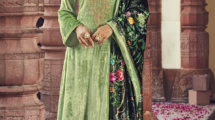




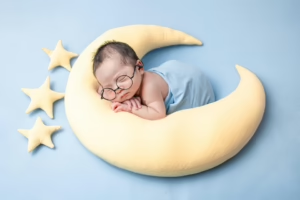
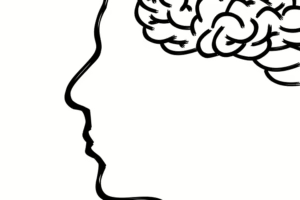
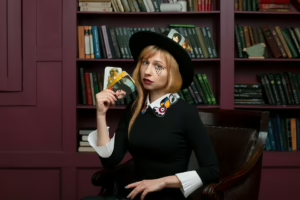
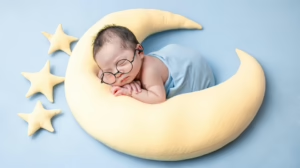
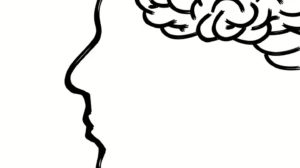
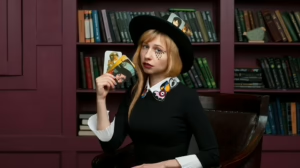




Add Comment